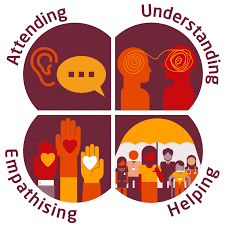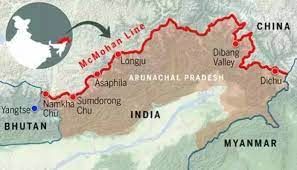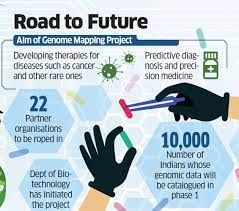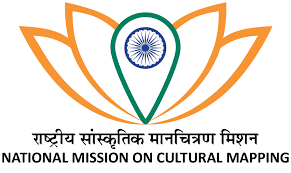UPSC Daily Current Affairs- 8th April 2023 | Current Affairs & Hindu Analysis: Daily, Weekly & Monthly PDF Download
GS-I
National Mission for Cultural Mapping
Why in News?
The detailed dossiers of the villages covered under the Mera Gaon Meri Dharohar programme of the National Mission for Cultural Mapping will be made available from May on a web portal.
About National Mission for Cultural Mapping:
- It was launched in 2017 by the Union Ministry of Culture
- Aim: To develop a comprehensive database of art forms, artists and other resources across the country.
- The government has identified and documented distinctive features of more than one lakh villages across the country.
- In this cultural asset mapping, villages have been broadly divided into seven-eight categories based on mythological ecological, developmental and scholastic importance.
- The Culture Ministry had approved a budget of ₹469 crores for the mission in 2017 for a period of three years.
- Detailed field surveys were carried out by joint teams of the Culture Ministry and the Common Services Centres (CSC), under the Ministry of Electronics and Information Technology.
Source: The Hindu
GS-II
Healthcare: Need For Compassionate Leadership

Why in News?
India’s rapid strides in health and healthcare with the help of a digital boom and the Ayushman Bharat Digital Mission, and the need for compassionate leadership to ensure respectful healthcare.
India’s healthcare sector
- India’s healthcare sector has shown improvement in multiple metrics due to the push for healthcare digitization, infrastructure, coverage, and other inputs.
- However, healthcare is not just about the treatment of diseases or the availability of infrastructure but also about the overall wellness of the person.
- Respectful healthcare that is available, affordable, accessible, and compassionate is a determinant of the quality of care.
Importance of Compassionate leadership
- Respectful and compassionate healthcare is essential: Healthcare is a perpetually evolving, stressful, and high-risk industry that puts a vast burden on healthcare providers. It is essential to navigate and manage the situation compassionately to deliver respectful care.
- Compassion is a beating heart if healthcare: Compassionate leadership is required to build this type of healthcare system, as it is the quiet, beating heart of the entire healthcare system.
Curriculum for compassionate healthcare
- Compassionate curriculum is very necessary: To integrate compassion into the healthcare system at every stage, it is necessary to build a curriculum and deliver it to those responsible for administering healthcare respectfully.
- Curriculum with Dalai Lama’s vision rolled out in Bihar: An eight-stage curriculum, developed by Emory University, that furthers the Dalai Lama’s vision of educating both heart and mind for the greater good of humanity is being rolled out in Bihar.
- Impact: To date, 1,200 healthcare providers across 20 districts have been impacted by the vital components of the cognitive-based compassion training, creating compassionate leaders at every level.
Institutionalizing compassionate healthcare
- Institutionalizing will bring in real change: While the curriculum is a quantum leap towards building compassionate leadership, institutionalizing it will bring in real change.
- Adopting at each level: Every academic institution and every department mandated with the responsibility to deliver health-related learning should develop and adopt compassion-based curricula.
- Building capacity: State and regional health institutions must also be built with the capacity to deliver compassionate leadership. Partnerships with established academia and development sector organizations can enable the organizing of master coaches and master facilitators, thereby creating public goods that can be delivered by all.
Strengthening internal systems
- Making compassion intrinsic to the ethos: All healthcare providers are expected to carry out a wide range of tasks within the system, which often leads to burnout and impacts patient experience adversely. It is vital to strengthen systems internally to make respect and compassion intrinsic to the ethos. Building a network: Building a network of compassionate practitioners in every state, district and block hospital is crucial to fan the winds of change by starting with self-compassion first and then moving to compassion for others.
- Valuing and measuring organizational culture: Valuing and measuring organizational culture is just as critical as patient outcomes. Developing sound metrics to measure culture and employee satisfaction, self-compassion, and compassion for the team assumes greater significance to building an institution whose foundation is compassion.
Conclusion
Respectful healthcare is already mentioned in the National Health Mission (NHM) guidelines, and such guidelines need to be the warp and weft of every policy and every guideline developed by public health authorities to improve patient experience. Compassionate leadership can truly realize India’s historically known values of compassion and bring alive the words of Hippocrates, the father of medicine, “Wherever the art of medicine is loved, there is also a love of humanity”.
Source: The Hindu
Arunachal Pradesh: China’s Cartographic Deception

Why in News?
The Chinese leadership has been using cartographic deception as a weapon to violate the sovereign national boundaries of its neighbours, and India has been a victim of this deception since Independence. The recent rechristening of villages and areas in Arunachal Pradesh is another example of China’s cartographic deception, and India must remain vigilant against such tactics.
Background: India-China relations
- Historical context:
- India has been a victim of China’s deception since its independence.
- Mao’s Red Army sent messages to Indian Communists promising support in their violent liberation struggle to overthrow the government of Jawaharlal Nehru.
- In the early 1950s, China started staking claims to large parts of Indian territory.
- Cartographic deception used by China:
- Cartographic deception is integral to the Chinese leadership’s machinations.
- China has been indulging in cartographic deception by staking claims to large parts of Indian territory.
- The recent rechristening of villages and areas in Arunachal Pradesh by the Chinese cabinet is another example of that cartographic deception.
- Despite President Xi Jinping’s claims of standing guard over the world order based on international law, China continues to use cartography as a weapon to violate sovereign national boundaries of its neighbours.
How cartography is used as a weapon?
- Deliberate manipulation of maps: The term use of cartography as a weapon refers to the deliberate manipulation of maps for political and strategic purposes. This can involve drawing new borders or redefining existing borders, claiming territory that was previously not contested or that belonged to another country, and renaming places to support these claims.
- Psychological warfare technique: It is often accompanied by historical revisionism, propaganda, and the creation of artificial historical links to justify these claims. This approach can be seen as a form of psychological warfare, intended to create confusion, weaken the opponent’s resolve, and undermine its legitimacy in the eyes of the international community.
Historical background of Arunachal Pradesh
- No contact with China: Historically, Arunachal Pradesh had no contact with China, and there was never any Chinese presence there.
- Shimla Agreement: The McMahon Line, which became the international boundary between India and Tibet through the Shimla Agreement between the British and Tibetan governments in 1914, clearly puts Tawang, which fell south of the McMahon Line, out of Tibetan administrative control.
- Claims over Tawang: Attempts by pro-China historians to claim that parts of Western Arunachal Pradesh like Tawang were under the rule of Lhasa before 1950 are negated by historical records.
Chinese invasion of Arunachal Pradesh in 1962
- During the Chinese invasion of Arunachal Pradesh in 1962, they were extra-cordial with the locals and made special efforts to convince them about the greater racial affinity between them.
- However, despite all the deceptive maneuvers during the 49-day-long occupation, the Chinese could not win over the hearts and minds of the people of NEFA.
Conclusion
India must remain vigilant against China’s cartographic deception, as it was through a similar deception in 1962 that China annexed territory. India has dismissed the recent rechristening exercise by China, and rightly emphasised that Arunachal Pradesh is, has been, and will always be an integral and inalienable part of India. India must continue to stand firm against China’s attempts to use cartography as a weapon to violate its sovereign national boundaries.
Source: The Hindu
Mera Gaon Meri Dharohar Program
Why in News?
The government has identified and documented the unique cultural heritage of more than one lakh villages across the country under the National Mission for Cultural Mapping’s Mera Gaon Meri Dharohar programme.
Mera Gaon Meri Dharohar
- The National Mission for Cultural Mapping aims to develop a comprehensive database of art forms, artists, and other resources across the country.
- The programme was launched by the Culture Ministry in 2017 but was handed over to the Indira Gandhi National Centre for Arts (IGNCA) in 2021.
- The programme aims to cover all the 6.5 lakh villages in the country.
Why such a program?
- The program seeks to document the cultural identity at the village level by involving citizens to share what makes their village, block, or district unique.
- The villages have been classified into seven-eight categories based on ecological, developmental, scholastic, historical, and mythological importance.
- The mapping aims to develop a comprehensive database of art forms, artists, and other resources across the country.
Survey process
- The survey process involves a CSC Village Level Entrepreneur (VLE) conducting meetings with locals and then uploading interesting facts about their village, its places of interest, customs and traditions, famous personalities, festivals and beliefs, art and culture, etc., on to a special application.
- The IGNCA plans to create special films on 6,500 village clusters showcasing their unique heritage.
- Short films have been made on 750 cluster villages, which have been shot using drones, and the VLEs would upload these videos on the application as well.
Source: The Hindu
GS-III
Cannabis cultivation

Why in News?
Recently, a five-member committee of MLAs has been formed by the state government of Himachal Pradesh to conduct a thorough study of cannabis cultivation and submit a report within a month.
About Cannabis Cultivation:
- What is cannabis? Cannabis refers to a group of three plants with psychoactive properties, known as Cannabis sativa, Cannabis indica, and Cannabis ruderalis.
- Cannabis is made up of more than 120 components, which are known as cannabinoids but experts have a pretty good understanding of two of them, known as cannabidiol (CBD) and tetrahydrocannabinol (THC).
- The Mexican term 'marijuana' is frequently used in referring to cannabis leaves or other crude plant material in many countries.
- The unpollinated female plants are called hashish. Cannabis oil (hashish oil) is a concentrate of cannabinoids obtained by solvent extraction of the crude plant material or of the resin.
- In India farming of cannabis has been legalised in Uttarakhand, and controlled cultivation of cannabis is also being done in some districts of Gujarat, Madhya Pradesh and Uttar Pradesh.
- Legal Provisions in India
- The central law that deals with cannabis (weed or marijuana) in India is the Narcotic Drugs and Psychotropic Substances Act, of 1985.
- The NDPS Act prohibits the sale and production of cannabis resin and flowers, but the use of leaves and seeds of the cannabis plant is permitted
- The states have the power to regulate and form the state rules for it.
Source: The Hindu
What is Genome India Project?

Why in News?
Recently, the secretary of the Department of Biotechnology said that under the Genome India project, close to 7,000 genomes have been sequenced and 3,000 of these are already available for public access.
About the Genome India project:
- It is a Pan India initiative focused on the Whole Genome Sequencing of representative populations across India.
- Goal: The goal is to start with and executes whole genome sequencing and subsequent data analysis of 10,000 individuals representing the country’s diverse population.
- This is a mission-mode, multi-institution consortium project, the first of its kind in India supported by the Department of Biotechnology, Government of India.
What is Genome?
- A genome is the complete set of genetic information in an organism.
- In living organisms, the genome is stored in long molecules of DNA called
- In humans, the genome consists of 23 pairs of chromosomes located in the cell’s nucleus, as well as a small chromosome in the cell’s mitochondria.
- A genome contains all the information needed for an individual to develop and function.
Source: The Hindu
|
38 videos|5288 docs|1117 tests
|
FAQs on UPSC Daily Current Affairs- 8th April 2023 - Current Affairs & Hindu Analysis: Daily, Weekly & Monthly
| 1. What are the three subjects covered in the UPSC exam? |  |
| 2. What is the importance of current affairs in the UPSC exam? |  |
| 3. How can I prepare for the UPSC current affairs section? |  |
| 4. Can I solely rely on online sources for UPSC current affairs preparation? |  |
| 5. How can I improve my answer writing skills for the UPSC exam? |  |


















